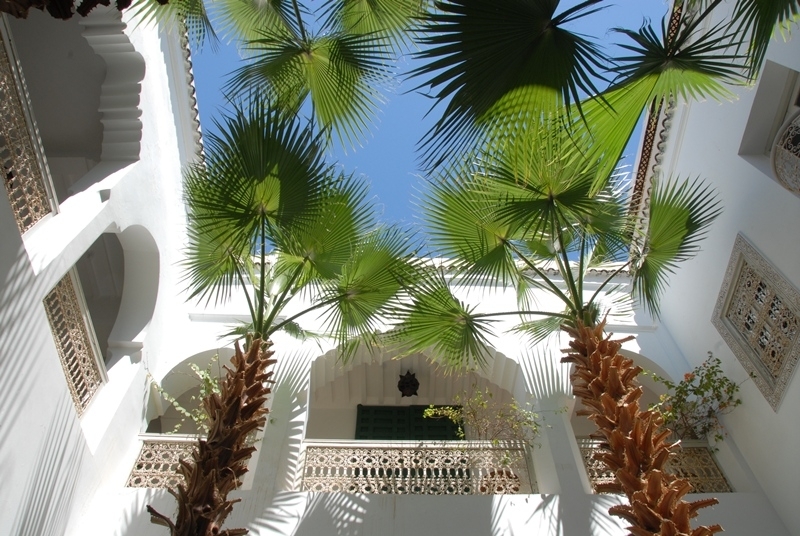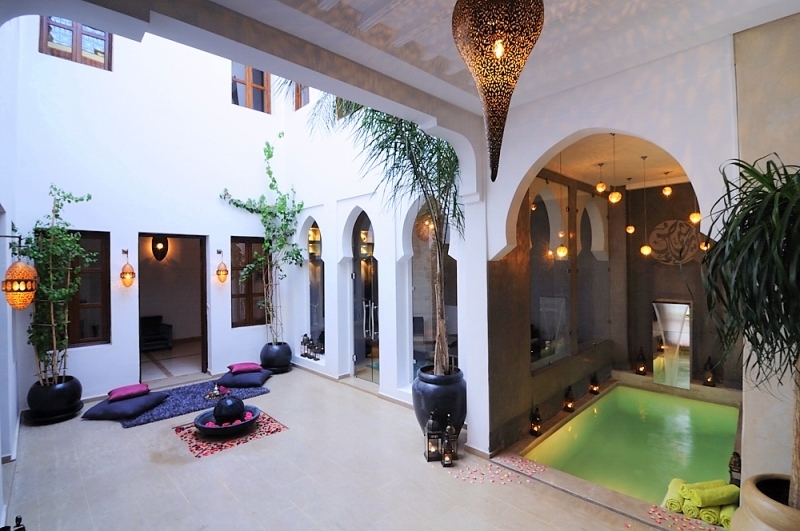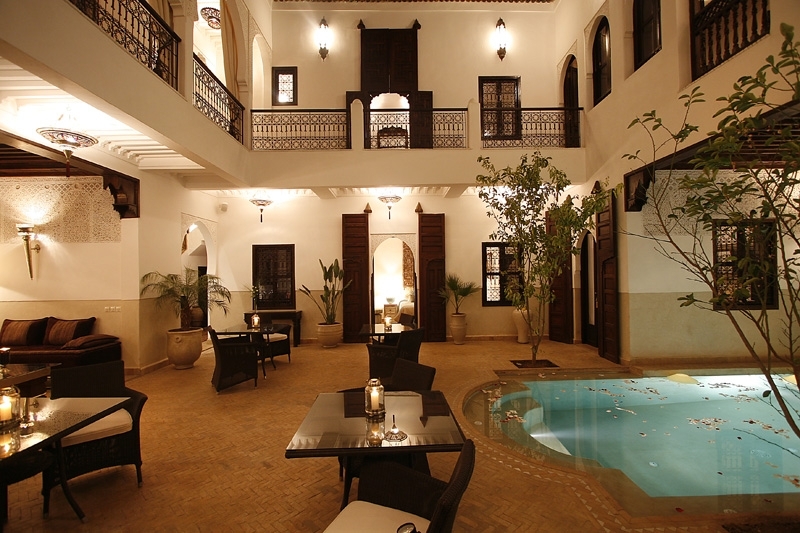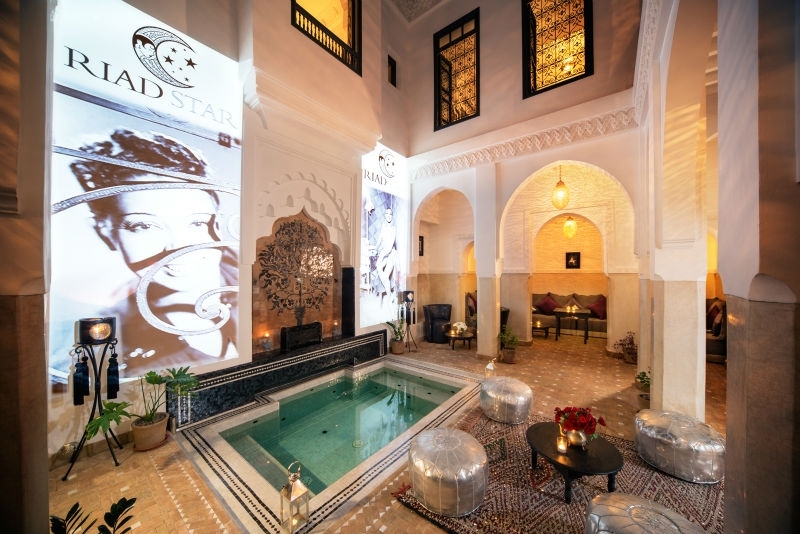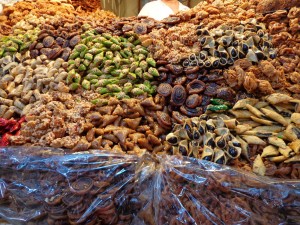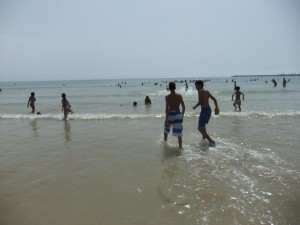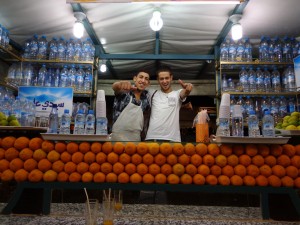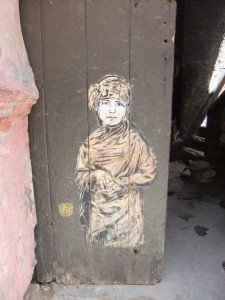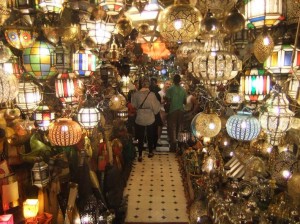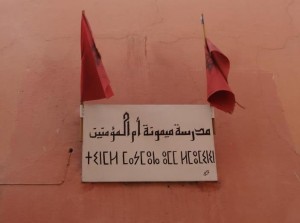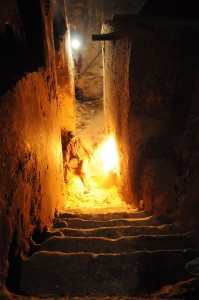As well as simply being delicious, Moroccan confectioneries are encompassed by important cultural significance from the very first stages of their production to their final destinations on the tables of families. For example the sesame cookie ‘Chebakia’ is a favourite choice for occasions such as weddings and especially during the holy month of Ramadan. Entire families often come together to make this ancient delicacy, weaving the sesame into the shape of a rose and then slowly cooking the cookie in rich, local honey. The design of the rose symbolises the love and unity of the families who congregate to make this special dish. This is just the story of¬†Chebakia, discover more of the secrets that Morocco has to tell through the unique characteristics of a hotel Riad. ¬†
August 24th, 2013
August 23rd, 2013
Especially during the summer months, tourists and Marrakshi locals alike flock to the sleepy seaside oasis of Essaouira to enjoy the cool seaside breeze which washes over the coast town. Unlike the hustle and bustle of the red city of Marrakech, you will discover Essaouira to be laid back and tranquil. Both sandy and rocky beaches connect the town to the North Atlantic ocean and many a blissful day can be spent here basking in the sun, dining at the many seafood restaurants and exploring the ancient fortifications that are built around the Medina. Discover the secrets of this remarkable destination for yourself with all the personal touches that a hotel Riad offers. 
August 22nd, 2013
If you speak to anyone who has traveled to the red city of Marrakech,  one thing they will not forget to mention are the famous orange juice stalls that are colourfully scattered through the central square of Jemaa al-Fnaa. Those who run the stalls usually speak an array of European and North African languages and it will not take them long to eventually guess your nationality and call for you to come and try their juice, which is all sold at the uniform price of 4 Dirhams (£0.31) a glass. Above is a photo of myself (resident blogger James Andersen) and my favourite salesmen, who after weeks of loyal custom insisted that I come into his stall and have a photo taken alongside him! Discover the magic of Marrakech for yourself with all the personal touches that a stay in a traditional hotel Riad can offer.
August 21st, 2013
From the new town of Guilez to the winding streets of the Medina, street art is a common sight throughout the red city of Marrakech. Just north of the cities famous souk district and a two minute walk from the Riad Star¬†you will discover one piece of art with has become particularly popular among locals and tourists alike. On the door of a local Gnawa musician and Tanjia cooker the French street artist C215 has left his mark in the form of a street stencil of a young girl. C215 has been dubbed the ‘banksy’ of Paris and has been showcasing his work from Oslo to New York and everywhere in-between. Explore Marrakech’s rich cultural history within the personal surroundings of a Riad in the red city.¬†
August 18th, 2013
Lamp’s have¬†been a hugely important aspect of Moroccan architecture and design¬†for centuries and are used in all four corners of Morocco to decorate shops, restaurants and houses. Hand-crafted Moroccan lamps come in all shapes and sizes and often take a painstakingly long time to complete. This lamp boutique in the centre of the of Marrakech is a fascinating example of the unique ambiance that Moroccan lamps illuminate onto their surroundings. Exploring Marrakech through one of our Riad’s is the ideal way to discover the red city of Morocco.
August 18th, 2013
Multilingualism has evolved in Morocco over the centuries to a point where many Moroccan’s speak French, Spanish or English as additional languages. Darija Arabic and Berber are widely acknowledged as the countries two official languages however. In the Marrakech region of Morocco the ‘Tachalhit’ form of Berber often be heard being called through the streets. Though it is primarily used through speech and not through writing, many signposts around the red city are multilingual and are inscribed with both translations. As you wander through Marrakech spare a thought for how remarkable it is that Arabic (which is read from right to left) and Tachalhit (from left to right) sit in complete unison with another, despite their vast differences!
August 16th, 2013
On www.hipmarrakech.com  one of our new features are riads with Hammams. The Hammam is important in Moroccan culture and life.
They are descended from Roman baths and modelled after Turkish baths.  I once read that there are over 700 Hammams in Marrakech, most of which are just used by locals.  They are heated by a huge furnace (see photo) in which a solitary man heaps cedar or wood turnings onto a massive stove.  Health and Safety UK would have a field day in these human ovens! The photo below was taken at the end of Rue Dar El Bacha, near to the Riad Darhani and Riad Papillon. Men and women visit at least once a week, spending 2-3 hours there catching up on gossip with friends, with long rituals for cleansing their bodies.
The public Hammam experience is a bit of an eye opener for the generally reserved Westerner. In the Hammam men and women bathe separately, but the women, generally shy by day in public, are far from shy with each other when it comes to the public Hammam. Women often go with friends or family, both to chat and socialise, but also to help each other with the ritual. Men are just men as everywhere!
On entering the public Hammam, you get changed as you would in a public swimming pool with wooden benches. You can hire buckets, leave your belongings once you have stripped off, and you can usually buy black soap and exfoliation gloves. You can also hire a lady or man to scrub you.
On passing into the Hammam itself, there will be bodies everywhere, lying on mats.¬† On the walls are hot water taps to fill your bucket. A bowl is used to slosh water all over you before covering oneself in black soap. The cleansing technique requires both hot and cold water, olive oil black soap and a mud-like paste. You need to know when to douse and when to drench, when to scrub and when to soak. The scrubbing part is a bit like being rubbed down with sandpaper, initially disconcerting and then becoming pleasurable.¬† Dead skin peels off to leave the skin somewhat red and raw. If you do it right, you’ll walk out of the sweat chamber relaxed and glowing.
Cleansing yourself at a Moroccan Hammam is a truly fantastic experience that is completely unique to this corner of the world. Trying a public Hammam is ideal for¬†adventurous travelers whilst booking this treatment in a private session through one of our Riad’s offers its own set of advantages. As well as being conveniently on your doorstep a private Hammam can be booked for mixed sex groups, at any time of the day and in complete privacy (options of which are not available in a public Hammam). After this treatment you will feel fresh, rejuvenated and ready to take on the red city!
August 11th, 2013
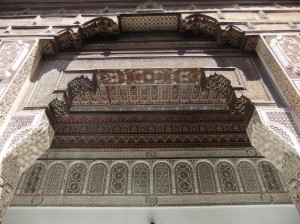
Located in the heart of the Medina, just a five minute walk from Marrakech’s central square is the Bahia Palace. The palace is an enclosed oasis next to the hustle and bustle of the rest of the red city and inside it you will find trickling fountains, orange trees and shaded gardens. Perhaps the most fascinating aspect of this ancient building however is the handcrafted detail that has gone into ceilings of the Palace. As Islamic law forbids artistic depictions of living things, Moroccan craftsmen have been practicing the art of ‘Zellige’ for hundreds of years, where complex patterns¬†of geometric shapes are chipped into wood and stone by hand. At a Riad in Marrakech you can discover the splendor of this art form and many others with your own eyes.
August 10th, 2013
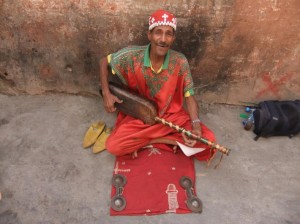
From the red city of ancient Marrakech to the blue streets of Chefchaouen one thing you will not miss are the abundance of ‘Gnawa’ musicians. There is a world of mystery surrounding the origin of this revered and celebrated art form. Moroccan’s agree that it originated from the southern reaches of the Saharan deserts but there is much dispute as to how and who originally brought this form of music to Morocco. One thing that is certain is that Gnawa has spread like wildfire through all four corners of the country. So much so, that native Moroccans with a keen ear for Gnawa can tell the origin of a musician by slight variations in style and performance in the same way as ¬†Darija Arabic accent. One feature that unifies all Gnawa musicians are the iron rattles or ‘karkabas’ that are often used to keep the beat as this alluring sound fills the streets.
August 9th, 2013
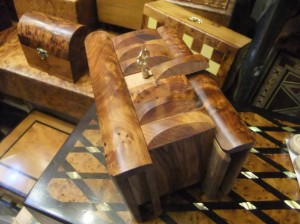
Deep in the souks of Marrakech you will discover one of the many stalls that sells traditional Moroccan chests and boxes. Hand crafted from the timber of walnut and coconut trees these chests come in a variety of designs that are unique to this corner of the world. There is one box however that is different from the others. If you ask store owners about the secret boxes, they will be delighted to let you try and find a way of opening them for yourself, however after 5 long, desperate minutes I was left completed baffled as to how to open it for myself. I won’t reveal the secrets of the souks in this article, you will have to discover them for yourself on your own adventure to this ancient city!
